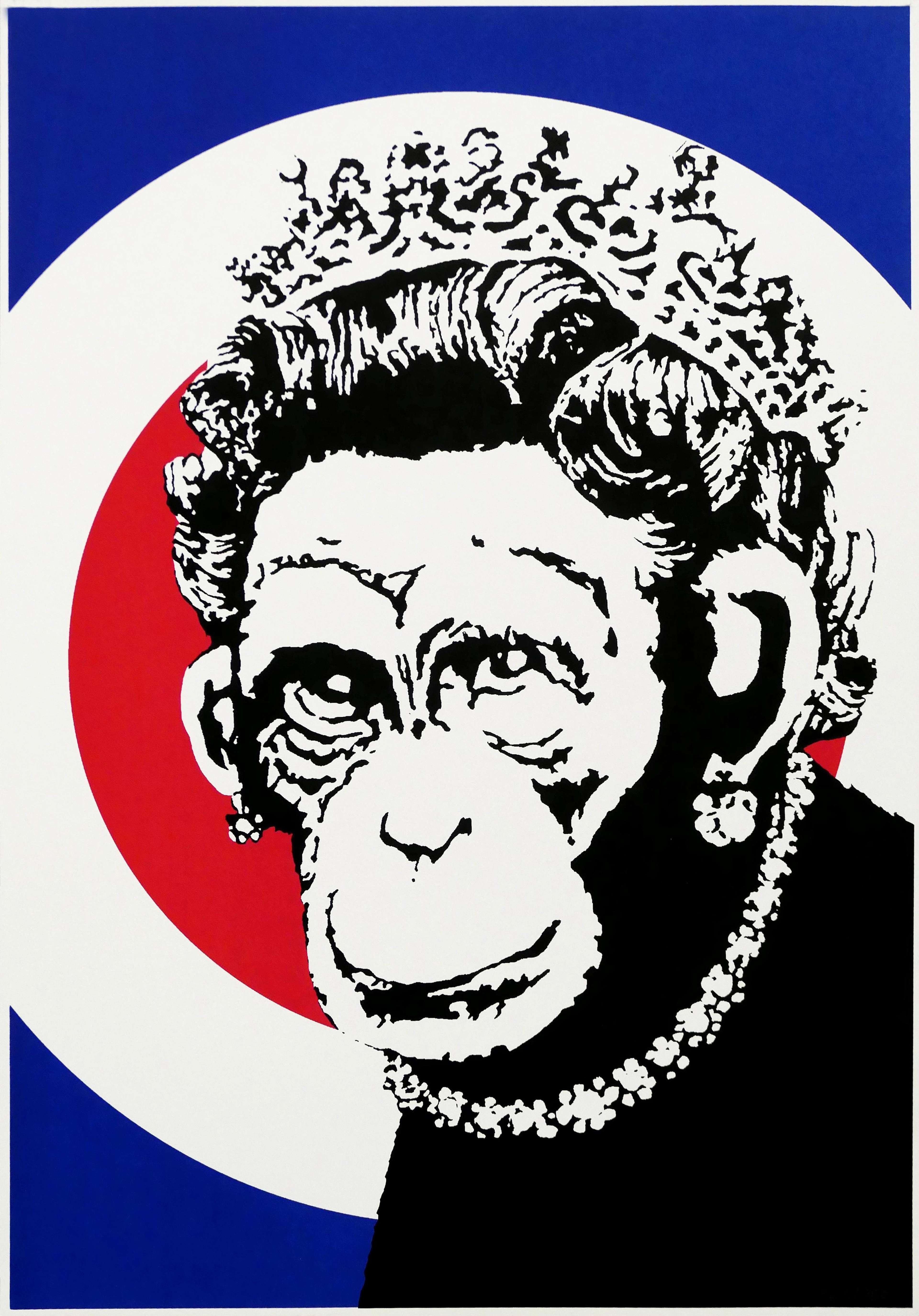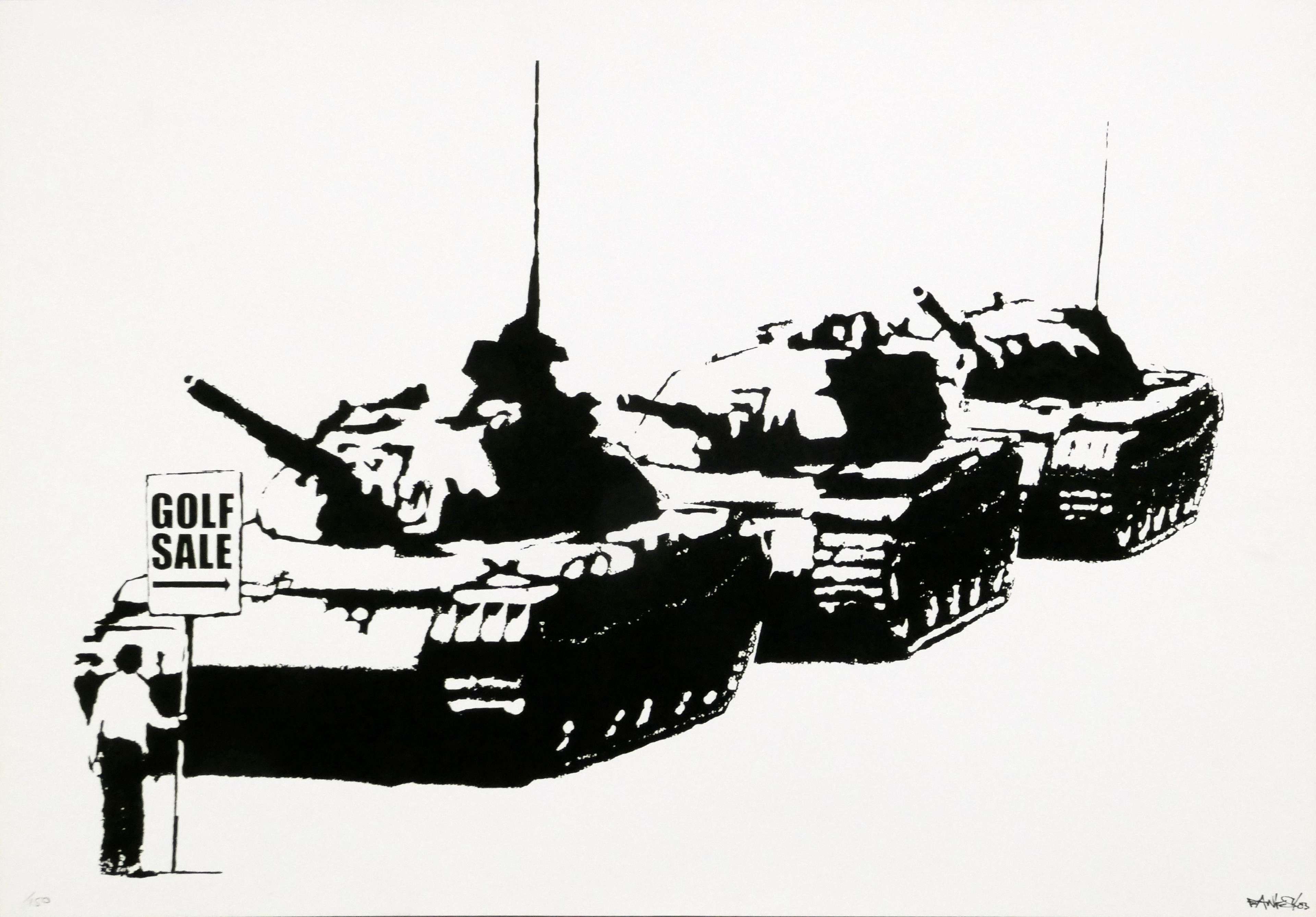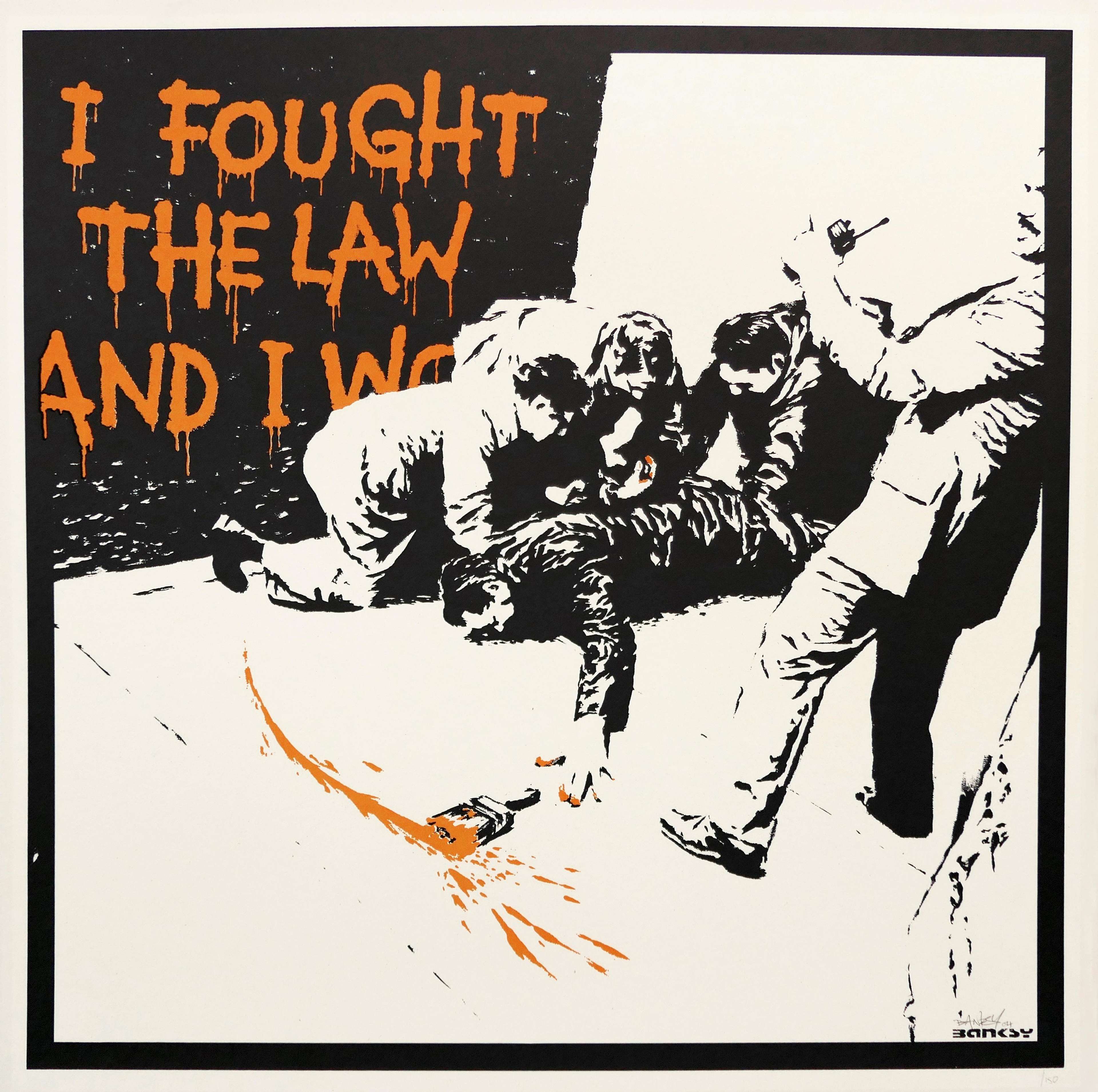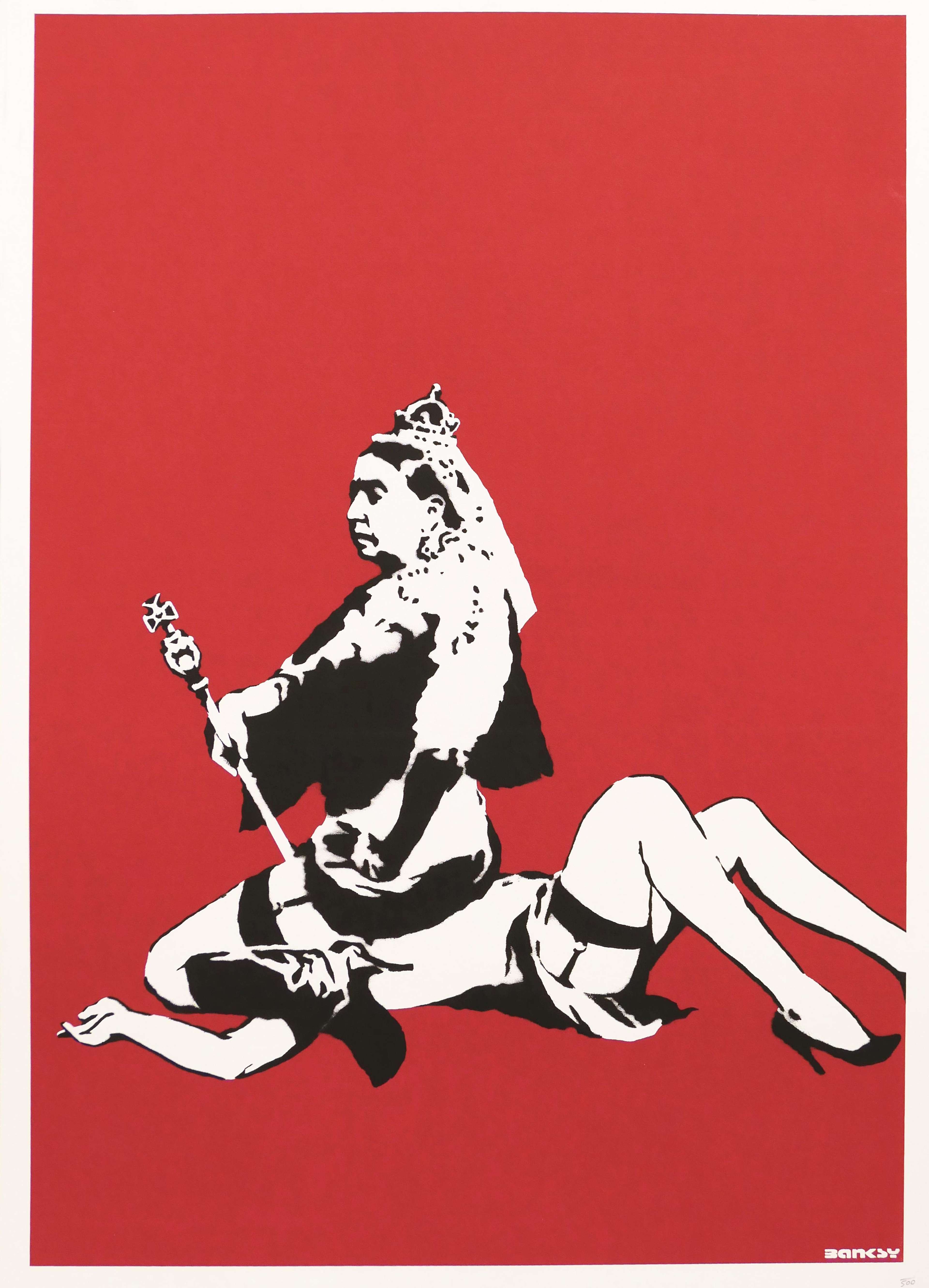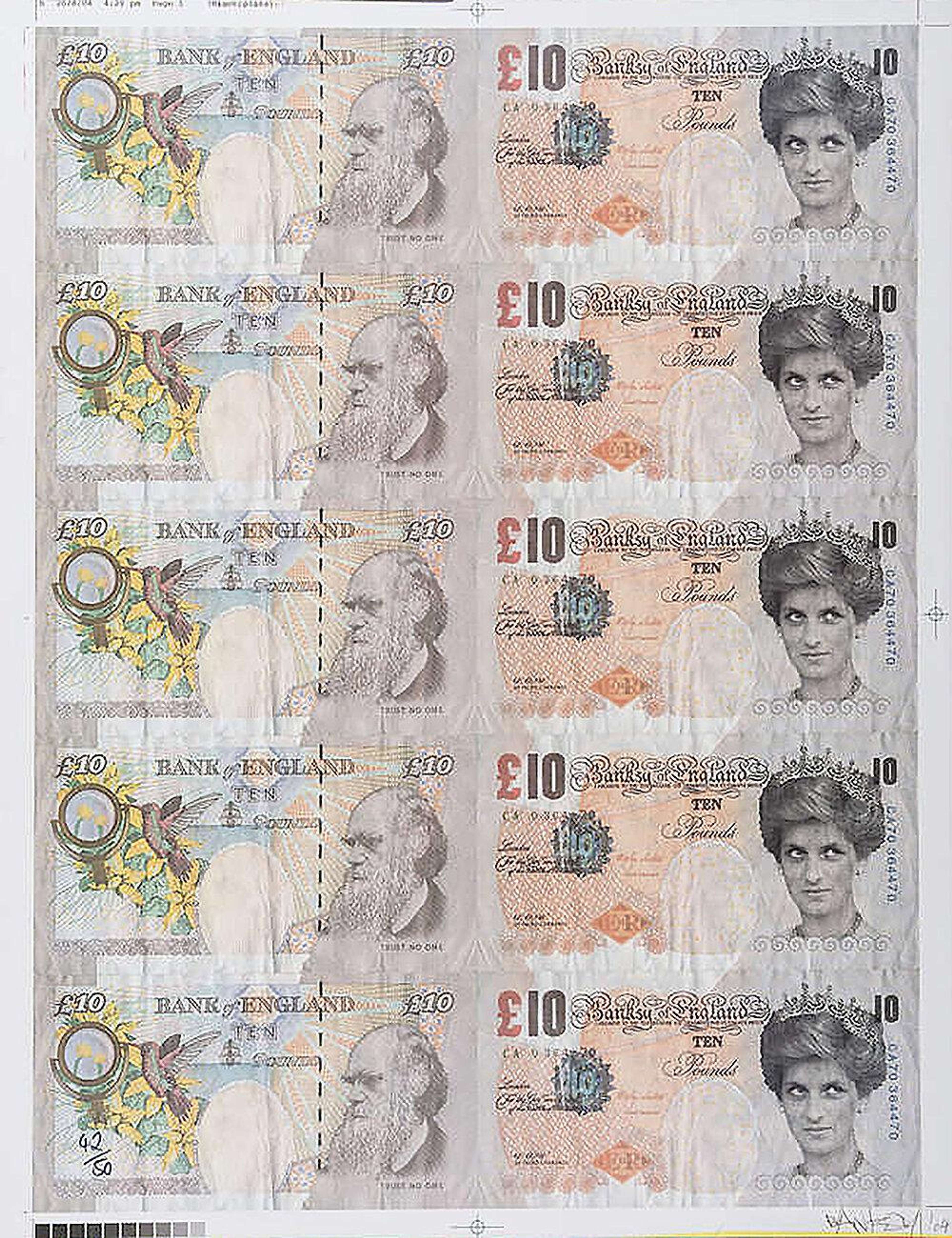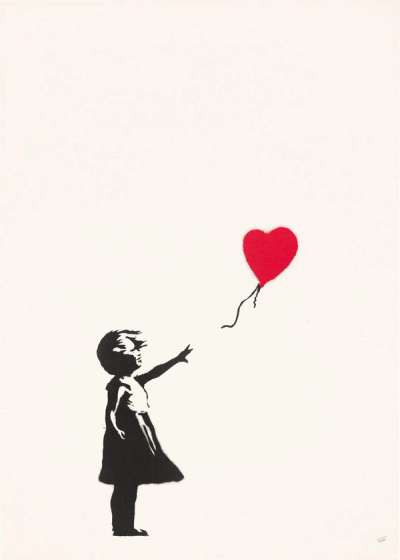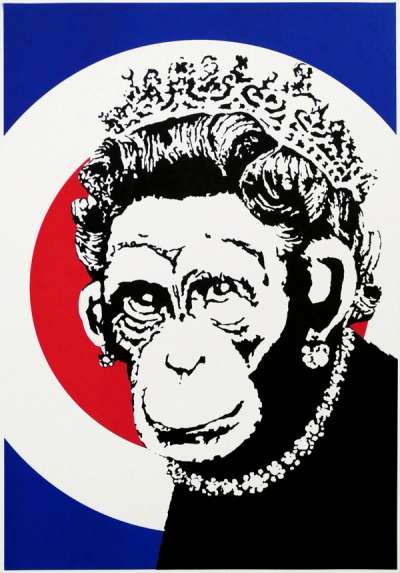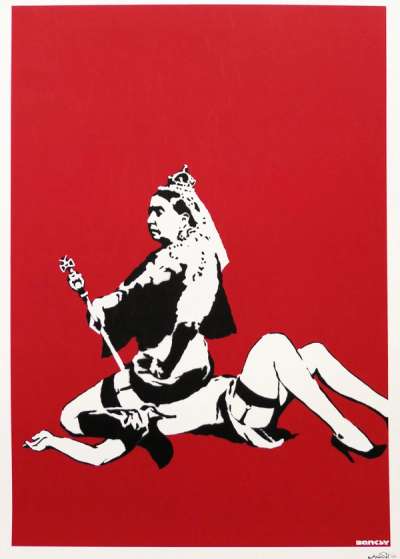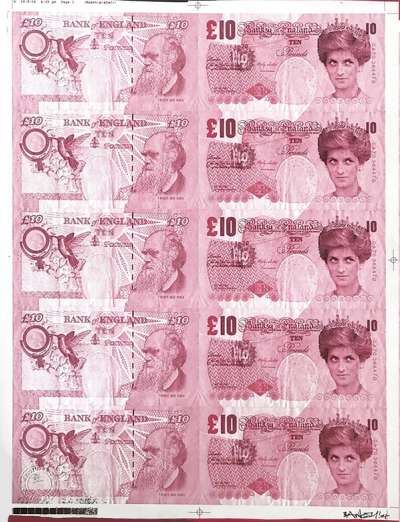Banksy Queens: Graffiti and Anti-Monarchy
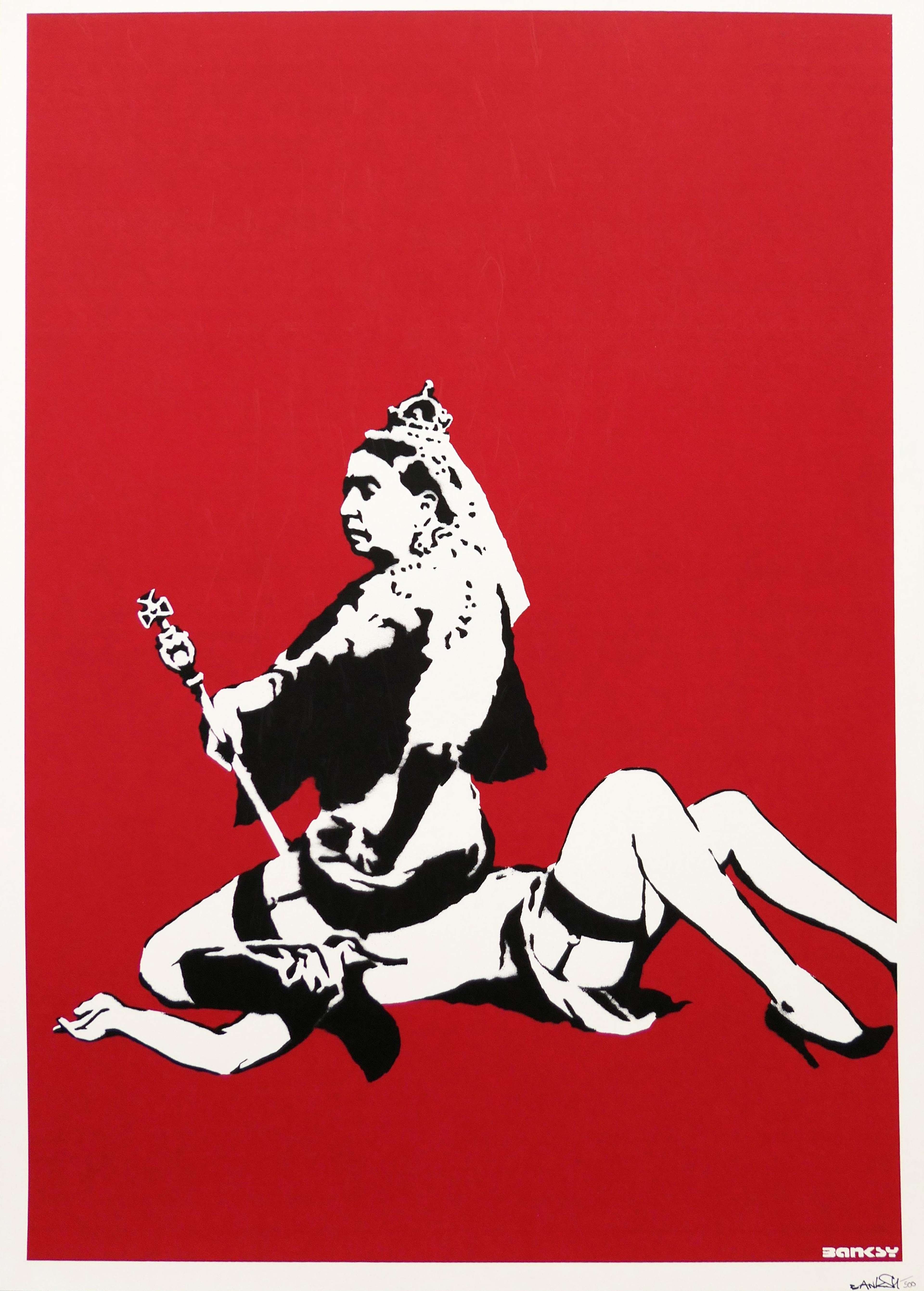 Queen Victoria © Banksy 2003
Queen Victoria © Banksy 2003
Banksy
266 works
Banksy’s portrayals of Queen Victoria, Elizabeth II and Lady Di make it no secret that the art world’s resident agitator is not the Royal family’s biggest fan. Be that through obvious digs in his artwork, or through his dedication to creating work that criticises the legacy of British imperialism, Banksy and the monarchy do not get along.
Here we look at some of the Bristol-born graffiti artist’s more overt anti-royalist works of queens and princesses. With these, Banksy tackles issues of authority, monarchy and freedoms in his typically astute style.
Monkey Queen (2003)
Perhaps the first work that springs to mind when thinking of Banksy and anti-royalist fervour is his infamous Monkey Queen (2003). Created to ‘Celebrate the fact that the highest position in British Society is not a reward for talent or hard work, but simply handed out with the accident of birth.’
Painted on the side of Newent’s The Chill Out Zone, Monkey Queen caused a stir when it was unveiled, with news coverage of its controversy dubbed ‘Banksygate.’ Many believed the work to be disrespectful to Queen Elizabeth, and to the Union Jack - as indeed, we see the flag’s colours mimicked in the backdrop and the Queen’s face substituted with that of a chimpanzee. The government then asked the Chill Out Zone - a youth club, for reference - not to display the piece during the Queen’s Golden Jubilee, inciting nationwide debate on issues of freedoms of expression and speech.
While this may not have been Banksy’s intended outcome when creating Monkey Queen - this image makes no attempt to hide his disdain when it comes to those in charge of our country. Equating the queen to an ape and satirising the ‘primitive’ concept of a monarchy itself, this work is Banksy at his most overtly critical.
Weapons of Mass Distraction (2001)
Created as a promotional image for the Banksy website in 2001, Weapons of Mass Distraction again plays on the royal portrait format. Here, 16 images of Queen Elizabeth in a gas mask have been perforated along the print to appear as usable postage stamps.
While this work is not overtly critical or provocative in terms of anti-royalist sentiment, the repeated image and gas mask motif ask more questions than they answer. What exactly are we being distracted from? What does the Queen, supposedly the most powerful figure in the country, need protection from? Are the stamps themselves the weapons or is it rather what they represent: the ubiquity and far reaching influence of the monarchy in our daily lives - from the smallest postage stamp to a royal portrait.
 image © artsy / Weapons of Mass Distraction © Banksy 2001
image © artsy / Weapons of Mass Distraction © Banksy 2001Queen Victoria (2003)
Speaking of another of his most controversial works, Banksy’s Queen Victoria or Queen Vic was also first produced in 2003. It shows the famously stern monarch caught, suspenders on show, sat on the face of another woman. An act called ‘Queening,’ Victoria here dons full royal regalia, complete with crown and sceptre, which are absurdly offset by her thigh high leather boots and tiny skirt.
Taking inspiration from rumours about the Queen’s own sexuality, (Victoria allegedly claimed that “women were not able to be gay”) Banksy has leant into the idea that perhaps her majesty was covering up her own sapphic penchants. Whether this is true or not, the work mocks the ignorance of such a wild claim, with many believing that Victoria’s advisors told her this fact in order to protect her from the knowledge of lesbians existing at all.
Unsurprisingly, Queen Vic caused an upset upon its release, with the usual complaints concerning disrespect and defilement of the royal family’s reputation, with almost all of the original graffitied images being removed immediately. Nevertheless, Banksy’s criticisms remain steadfast - no monarch is above getting caught in ‘the act,’ and no one person can police sexuality and get away with it, at least not on his watch.
Di-Faced Tenner (2004)
A now-notorious project, Banksy created Di-faced Tenner in 2004. Featuring five £10 notes per print, the play on ‘defaced’ is apparent when we realise the face of Queen Elizabeth has been swapped out for that of the late Lady Diana.
This is not where the wordplay ends, as on closer inspection we see the inscription “Banksy of England” as well as the promise to “pay the bearer on demand the ultimate price” - referencing Diana’s untimely death at the hands of hounding paparazzi, following her estrangement from the royal family. On the reverse, there is just the warning: ‘Trust no one.’
Banksy printed £10,000 Di-Faced tenners in 2004 alone, equating to £1 million in fake currency. In a stunt that same year, a suitcase full of these notes was thrown into the crowd at both Notting Hill Carnival and Reading festival, which some particularly lucky festival-goers were able to use as real currency before people cottoned-on. More than just a performance, we can see how Di-Faced tenner again draws our attention to the ubiquity of the royal family’s image in our everyday lives. Moreover, the criticism faced by the Royals following their treatment of Diana has been capitalised on here by Banksy, as the ‘People’s Princess’ has become an emblem of the Royal institution’s shortcomings - low hanging fruit perhaps, but effective nonetheless.
Learn more about Banksy's Di-Faced Tenner here.
The selection of artworks above prove that Banksy is not afraid to directly and contentiously take aim at the Royal family, even when it comes to the biggest taboos going—like depicting a revered monarch in the midst of a sexual act. But Banksy has criticised the monarchy in other, more subtle ways too. For example, in the run up to the 2012 Diamond Jubilee, Slave Labour, a mural by Banksy appeared in Wood Green, London. Importantly the mural appeared on the side of a Poundland shop, offering a more general criticism of Royalism in the UK, and the dark consumerism that underlies Jubilee fanaticism. Other murals, like Royal Family, in Hackney, have featured the Monarchs, but offered no outright criticism beyond their humourous transformation into cartoon characters.
However you feel about the Royal Family, Banksy's commentary is exemplary of his artistic talent in tapping into the public mood and topical events, in order to stir up a media frenzy.
 BBC © 2013 / Slave Labour © Banksy 2012
BBC © 2013 / Slave Labour © Banksy 2012
